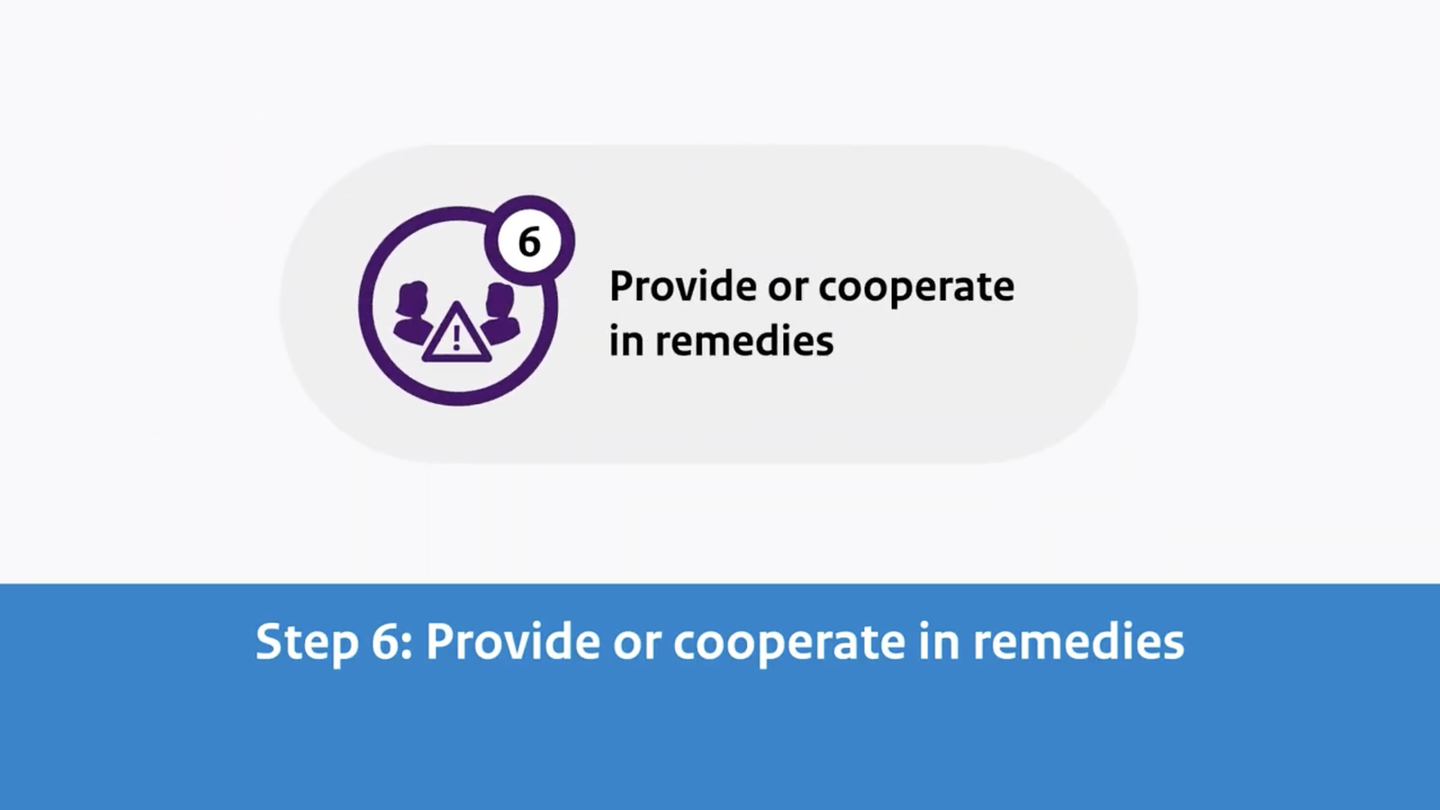Take responsibility
Eliminating negative impacts on people and the environment is not always easy, despite our best efforts. Therefore, there is a possibility that such impacts may occur in your chain. Third-party reports, internal audits, and grievance mechanisms can all help identify adverse impacts. It is crucial to take complaints seriously and address them promptly by providing remedies or cooperating in the remedial process.
Grievance mechanism
Establishing a robust grievance mechanism is important to identify negative impacts effectively. This grievance mechanism is always accessible to internal and external stakeholders. A robust complaints mechanism:
- Is known to all employees of your company and those of your suppliers.
- Is easily accessible to all employees.
- Handles information confidentially.
- Is trusted by all employees.
- Protects whistle-blowers.
- Registers all complaints and how they have been handled.
It is essential to educate employees about the grievance mechanism regularly. During these trainings, it is good to emphasise that the mechanism contributes to safeguarding human and labour rights and environmental protection.
Note! A company itself can establish a grievance mechanism, or (small) companies can join collective grievance mechanisms, such as through collective labour agreements. Therefore, seeing if there is such a collective presence in your sector with a robust grievance mechanism is important.
Remedial measures
Remedial measures are necessary to address or resolve negative impacts in the chain. Providing remedial measures is a separate process and contributes to and supports due diligence.
The extent to which your company needs to take action depends on the extent to which your company is involved. As you learned in module 1, a company can cause a negative impact on itself, contribute to it, or be directly linked to it. For example:
- Causing: for example, a flower grower with their nursery in Africa where labour rights are violated.
- Contributing to: for example, a clothing brand that adjusts orders at the last minute, causing employees to work overtime.
- Being directly linked to: for example, a jeweller purchasing gold through many intermediaries from a mine where child labour has been discovered.
In the event that your company causes or contributes to negative impacts, you will offer restitution. If you are linked to the damage, you can assist in the recovery.
Offering Remedies
Remedial measures can take many forms. Think, for example, of apologies, recognition of union representatives, financial compensation, dismissal of responsible employees, measures to prevent adverse impacts in the future, etc. The form of remedy needed to address or resolve damage depends on the nature and extent of the negative consequence. It is, therefore, essential to map out the most suitable process for remedy.
This can be identified by looking at:
Legislation and regulations
In some cases, (international) legislation and regulations prescribe which restorative measures should be taken.
Case studies
If there is no legislation or regulation to provide remedies, it is helpful to see how other companies in similar situations have provided remedies.
Stakeholder input
Especially for human rights violations, it is essential to involve stakeholders in remedies. The victims' perspective must be well considered in the decision on remedies.
Cooperating in remedies
In the event that the company did not cause or contribute to the damage itself, it may still be directly linked to it. The company can choose to cooperate in the restoration process by engaging in discussions with business partners responsible for the damage or by providing information about the situation to stakeholders. In this way, the company does not directly address or resolve the damage itself but contributes to the process.
Useful tools
- The ‘handbook effective grievance mechanisms’ provides relevant case studies, lessons learned, and practical recommendations for an effective complaints mechanism.
Homework assignment
After this assignment, you will have a clear understanding of whether the grievance mechanism is properly set up and whether restitution is being provided in the right manner.
If your company does not have a grievance mechanism yet, look if there is a possibility of joining a collective grievance mechanism, for example, through the CAO (in the Netherlands). If a grievance mechanism is already in place, move on to the following assignments.
Check how your company's grievance mechanism is organised. Make sure a robust grievance mechanism:
- Is known to all employees of your company and those of your suppliers.
- Is easily accessible to all employees.
- Handles information confidentially.
- Is trusted by all employees.
- Protects whistle-blowers.
- Registers all complaints and how they have been handled.
- Does your complaints mechanism meet the above elements?
Review the last 5 complaints that have been received. How did the company address these complaints?
Is the level of action taken in line with the expectation for companies causing, contributing to, or being directly linked to negative impact?
Check if the actions taken align with what other companies in the sector do.
